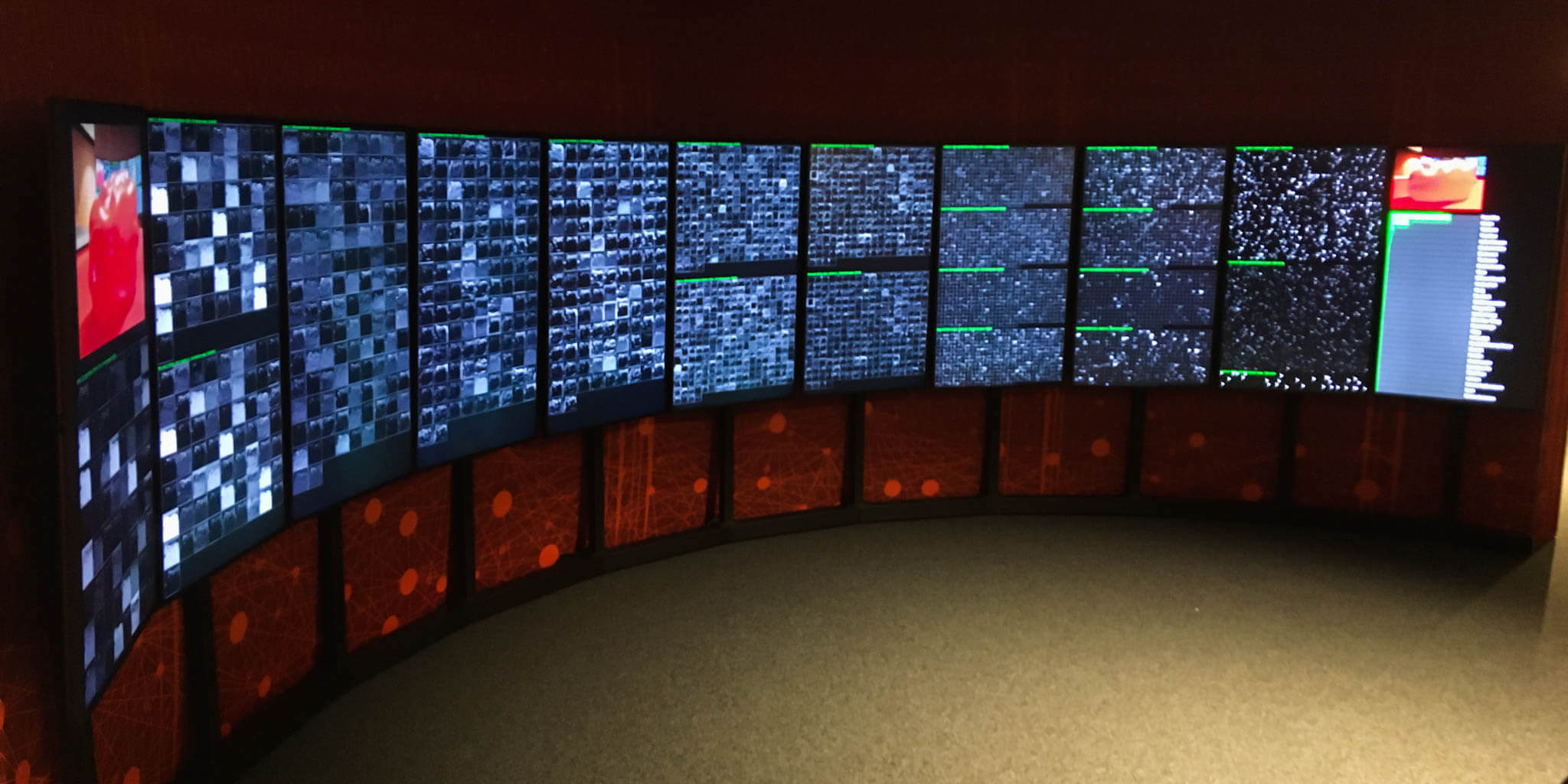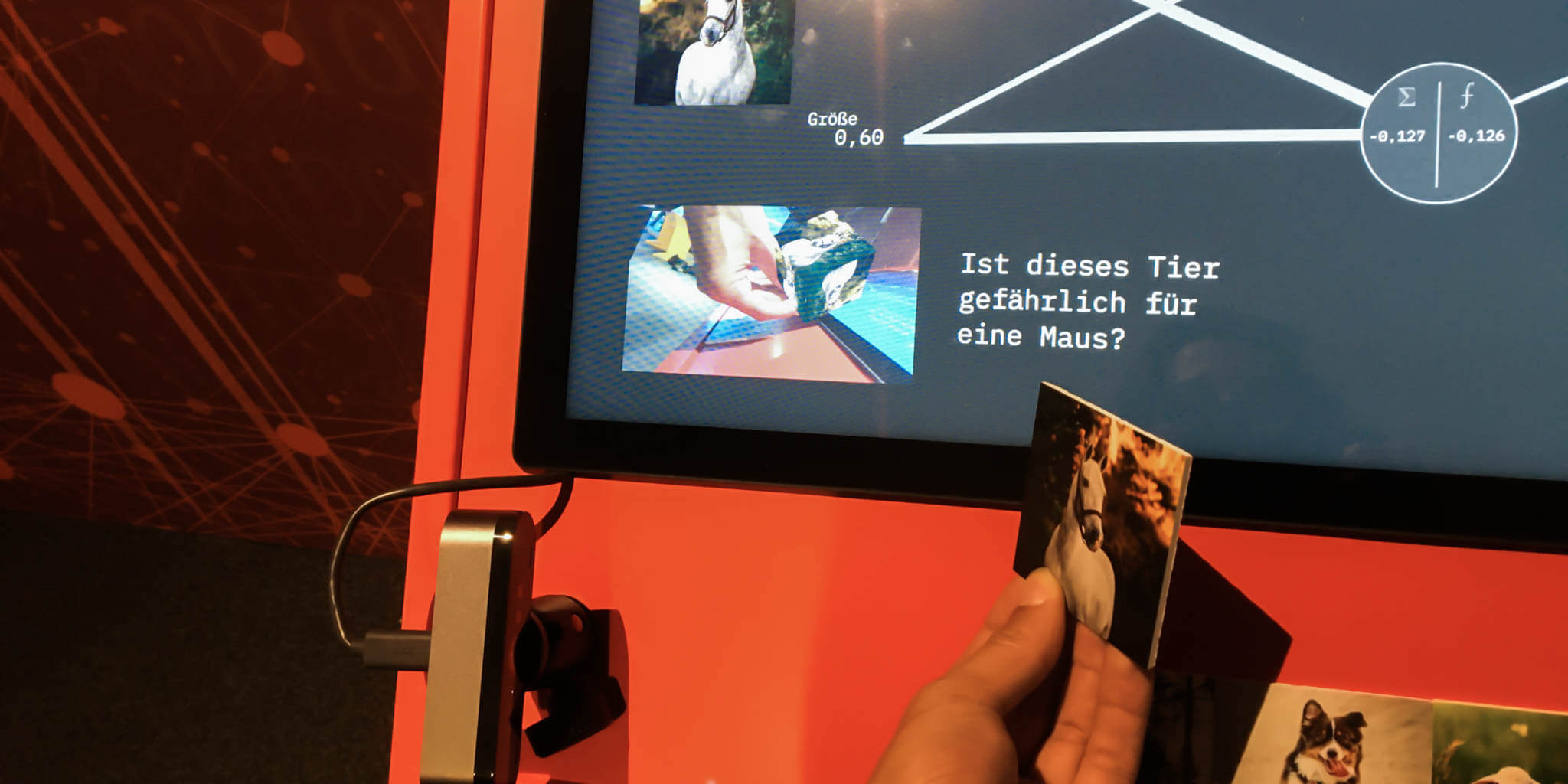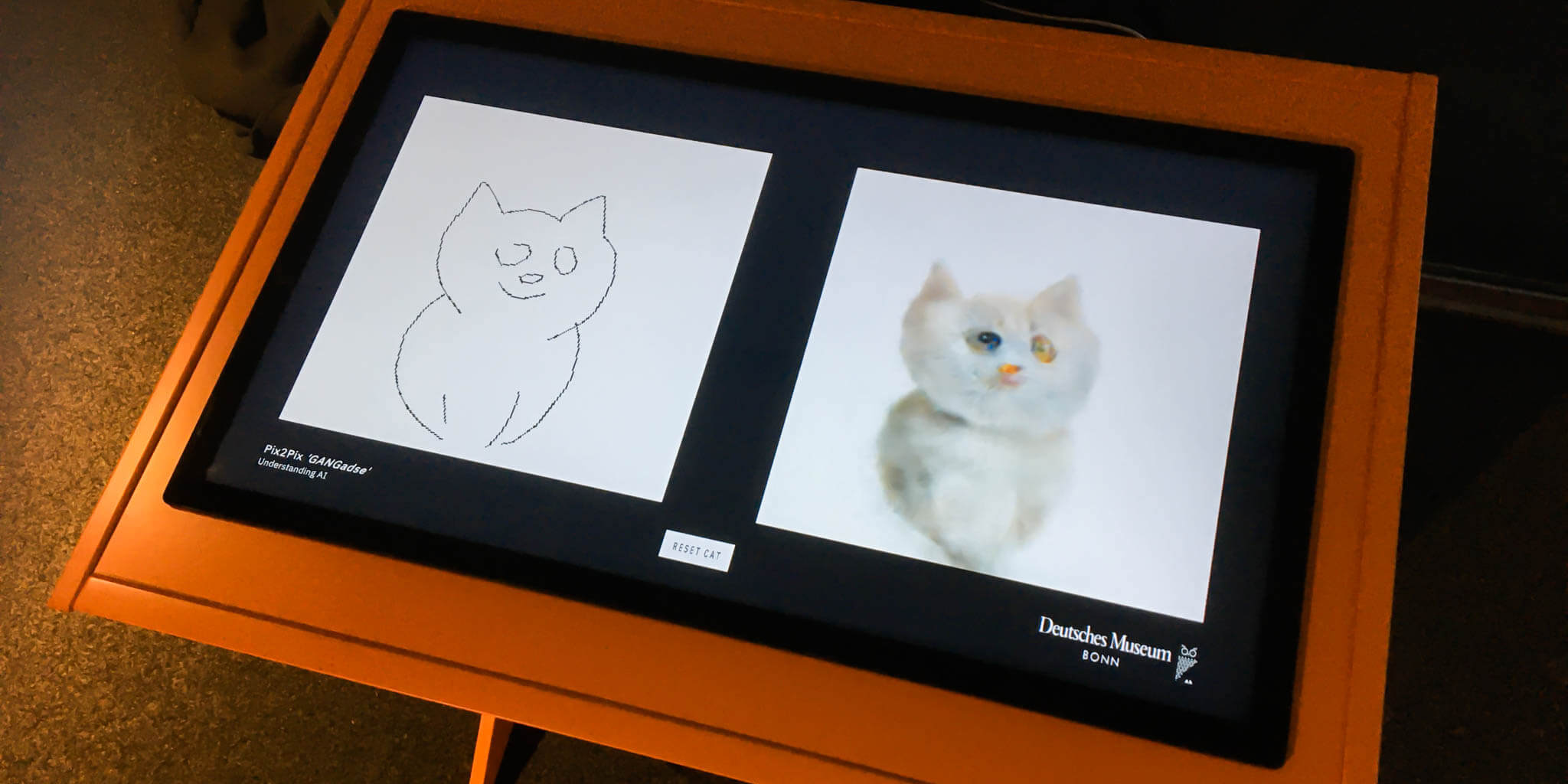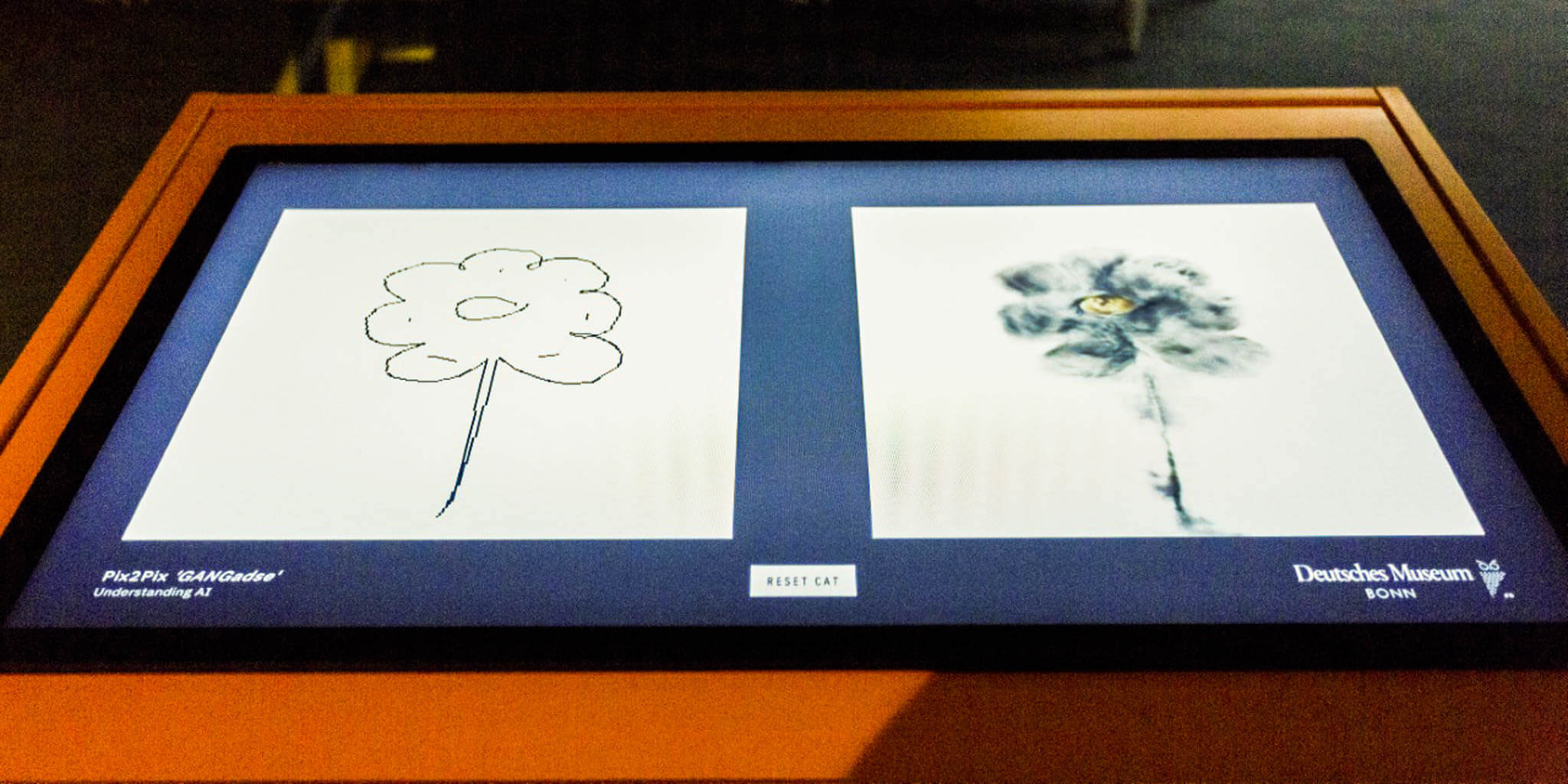In Zusammenarbeit mit dem Ars Electronica Futurelab hat sich das Deutsche Museum in Bonn neu erfunden, um zu einer zentralen Plattform für das Thema künstliche Intelligenz zu werden: In zwei themenbezogenen Erlebnisräumen können die Besucher*innen der Ausstellung Mission KI nun auch dort die Schlüsseltechnologie des 21. Jahrhunderts erkunden.
Dass “die künstliche Intelligenz” bloß aus kryptischem Code besteht, ist manchmal schwer zu greifen. Ein grundlegendes Verständnis für diese Computersysteme soll uns dabei helfen, ihr Potential einzuordnen und notwendige Alltagsentscheidungen besser zu treffen. Wie viel Macht wollen oder sollen wir in Zukunft an Algorithmen vergeben? Einfache Antworten auf komplexe Fragen zu Nutzen oder Gefahren im Zusammenhang mit künstlicher Intelligenz gibt es nicht. Doch neues Wissen über und persönliche Erfahrungen mit der Zukunftstechnologie können uns durch das komplexe Minenfeld dieser gesellschaftlichen Debatte navigieren. Hier setzt Mission KI im Deutschen Museum in Bonn an.
Neben einem Erlebnisraum KI, der die Komplexität des Themas erschließen und gängige Mythen rund um künstliche Intelligenz enträtseln soll, bietet Mission KI den Besucher*innen auch einen Erlebnisraum für Selbsterfahrungen mit verschiedenen KNN (Künstlichen Neuronalen Netzen). Wer ein Convolutional Neural Network beim Sehen und Klassifizieren beobachten will, kann das hier tun.
Die KI-Vermittlungskonzepte Neural Network Training, Comment AI und Pix2Pix: GANgadse, sowie „CNN – What convolutional neural networks see“, wurden vom Ars Electronica Futurelab ursprünglich für die Ausstellung Understanding AI im Ars Electronica Center entwickelt. Ebenfalls im Zukunftslabor entstanden ist das auf einer künstlichen Intelligenz basierende Musikkompositionssystem Ricercar. Sie alle sind nun auch in Bonn zu sehen und laden dort ebenfalls zum Ausprobieren, Staunen und Mitdiskutieren ein – zusammen mit zahlreichen weiteren Exponaten aus den Denkfabriken anderer Institutionen.

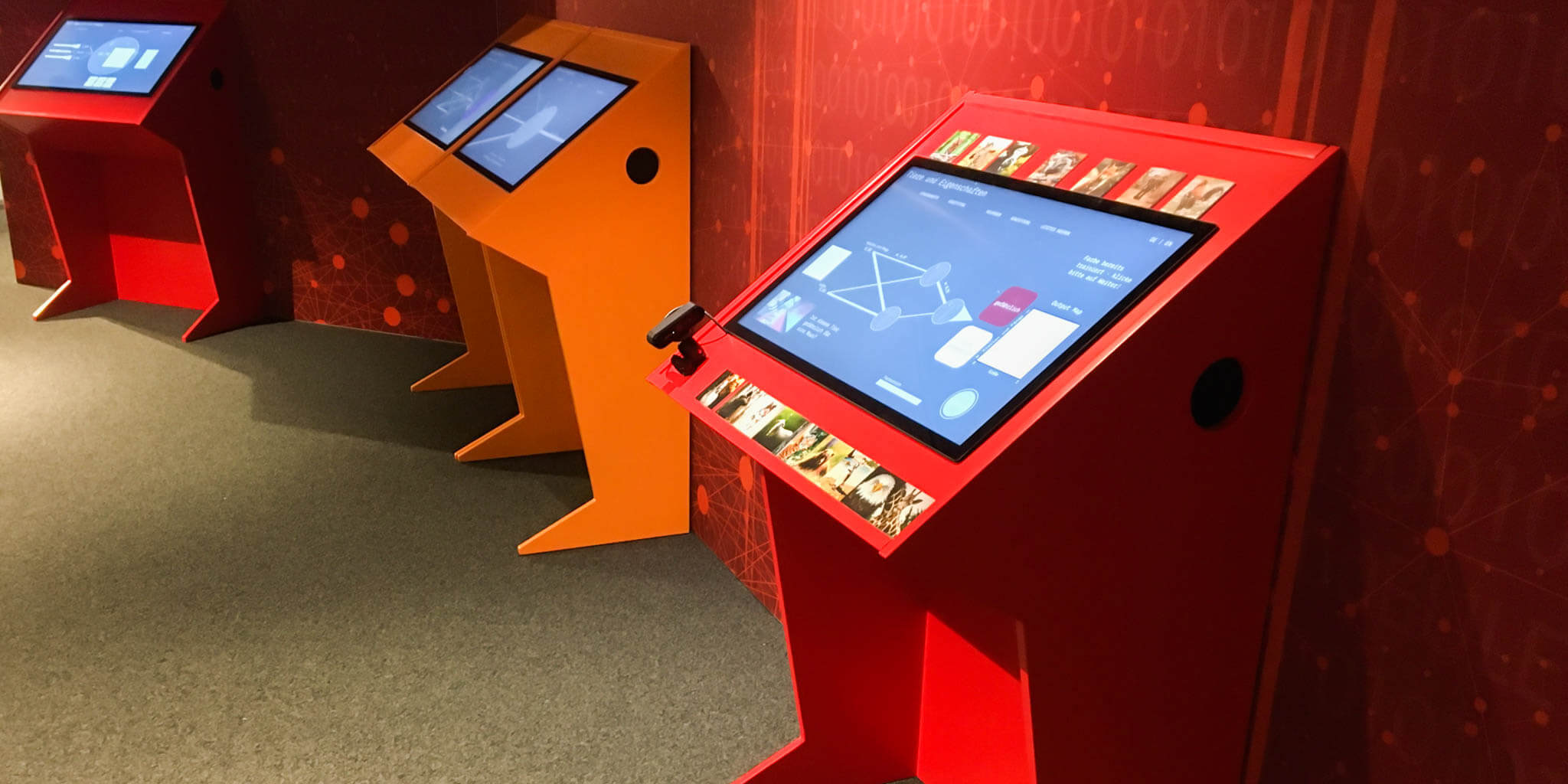
KI-Vermittlungskonzepte aus dem Ars Electronica Futurelab
Was sich hinter dem Begriff Deep Learning, also dem “Training” von KI-Systemen mit Daten verbirgt, erklärt die interaktive KI-Erlebnisausstellung mit Neural Network Training: An dieser Forschungsstation kann man selbst KI-Systeme trainieren. Das Sammeln eigener Erfahrungen führt die Besucher*innen an das kontroverse Thema heran und zeigt, dass es Qualität und Beschaffenheit von Trainingsdaten sind, die ausschlaggebend für die „Intelligenz“ künstlicher Computersysteme sind. Automatisch fällt der Fokus dabei auch auf die Integrität und das Verantwortungsbewusstsein der “Trainer*innen” selbst, die das System mit ihren Entscheidungen steuern.
Das gut überlegte Vorbereiten von Trainingsdaten gehört daher zu den wichtigsten Arbeitsschritten im Bereich “Machine Learning”. Auch mit Comment AI kann man dabei helfen, einer zukünftigen KI-Anwendung korrektes Interpretieren anzutrainieren: Besucher*innen klassifizieren hier Kommentare, die in Online-Foren einer Zeitung gesammelt wurden: Sie entscheiden, in welche Kategorie ein Kommentar einzuordnen ist. So lernt die KI mit der Zeit, Wortkombinationen selbst zu interpretieren.
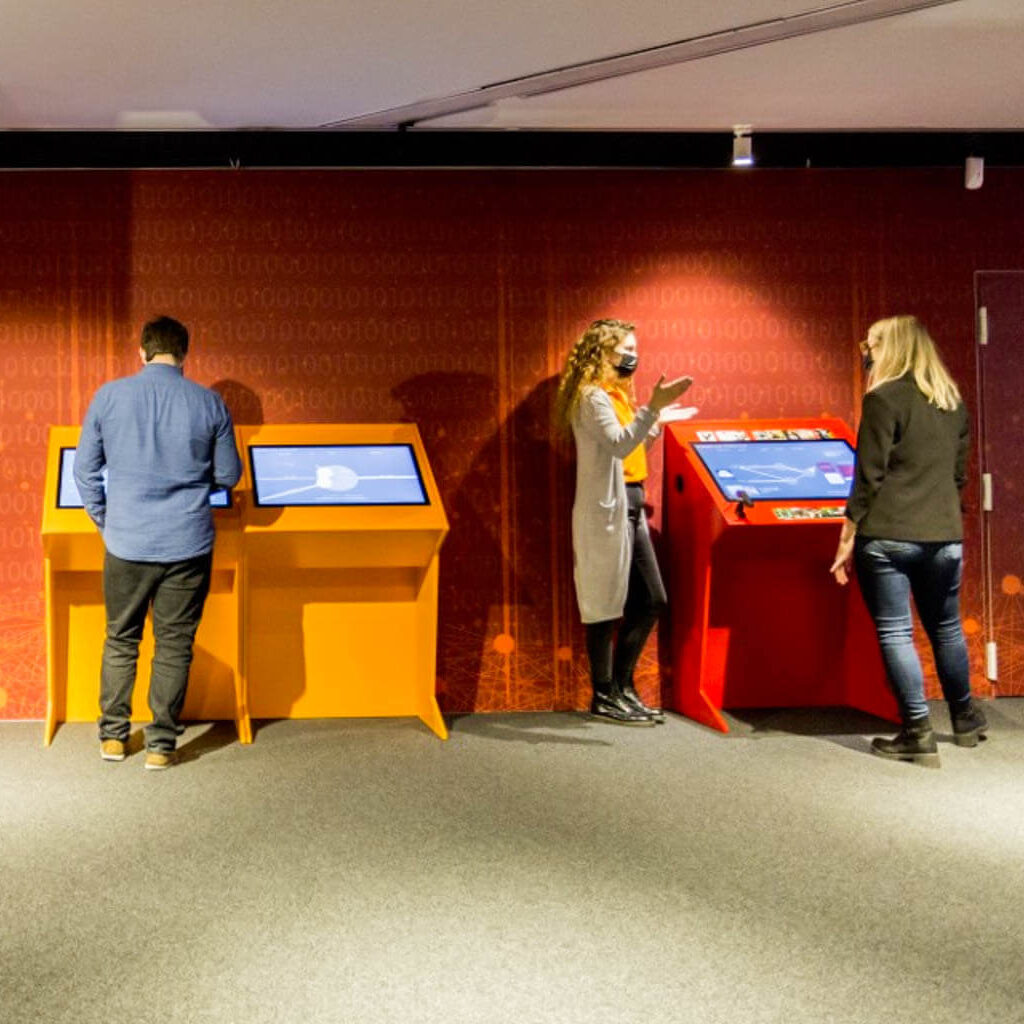

Dass ein künstlich intelligentes System jedoch nicht nur Daten sortieren, sondern sogar kreativ sein kann, macht Ricercar aus dem Ars Electronica Futurelab den Besucher*innen eindrucksvoll klar: Das Deep Neural Network ist in der Lage, eigenständig Musik zu komponieren, und dient als intuitive Schnittstelle zwischen Mensch und Maschine. Eine musikalische Idee, die in das System eingegeben wird oder von diesem selbst generiert werden kann, wird so neu entdeckt. Mit der Möglichkeit, die Ausgabe des Systems zu kontrollieren und zu personalisieren, werden mit der schöpferischen Interaktion mit der KI die Vorzüge künstlicher Kreativität erlebbar gemacht.
Einfach jede erdenkliche Form, die sich ein*e Zeichner*in nur vorstellen kann, scheint dagegen in der KI-Installation Pix2Pix: GANgadse in enger Verwandtschaft mit einer Katze zu stehen. Wie viel Spaß man mit zusammen mit dem KI-System Conditional Generative Adversarial Network (cGAN) haben kann, das für diese Station ausschließlich mit Bildern von Katzen trainiert wurde, macht dieser unterhaltsame Zugang zu KI auch den allerjüngsten KI-Forschenden ziemlich schnell klar: Der konsequente Versuch der künstlichen Intelligenz, in jede beliebige Zeichnung eine flauschige Katze zu interpretieren, führt zu einem amüsanten Spiel mit der sagenumwobenen Zukunftstechnologie. Das Verständnis fällt so niemandem schwer: KI kann Daten nur anhand jener Informationen interpretieren, die ihr zuvor antrainiert wurden.
Credits
Ars Electronica Futurelab: Arno Deutschbauer, Samuel Eckl, Peter Freudling, Stefan Mittlböck-Jungwirth-Fohringer, Ali Nikrang, Erwin Reitböck, Julian Zauner
PARTNER: Deutsches Museum Bonn
